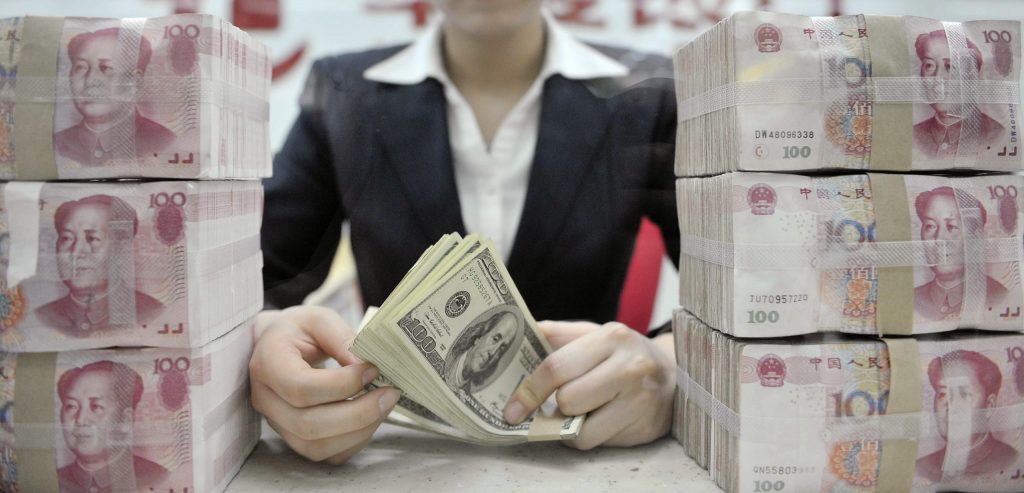Editor’s note: This news is very big. It brings the dollar overvaluation issue closer to the fore. The wrongheaded “strong dollar” stance of the US may soon give way to a competitive dollar position.
China guided the yuan to its weakest official level in a decade on Tuesday—a move that could fuel expectations of a further, self-reinforcing slide.
[ Saumya Vaishampayan and Mike Bird | Oct. 30, 2018 | WSJ]
The yuan’s depreciation puts pressure on Chinese policy makers, who want to give investors a bigger say in determining the currency’s value but appear uncomfortable with letting the yuan fall beyond a symbolic seven to the dollar. The recent slide has reignited speculation about whether further weakness could spark capital flight, which would in turn exacerbate the currency’s swoon.
On Tuesday, the central bank set the dollar’s reference rate at 6.9574 yuan, putting the Chinese currency at its weakest since May 2008. The yuan slid to a decade low once mainland trading started 15 minutes later, with one dollar buying as many as 6.9724 yuan, according to Wind.
The yuan has been hit this year by an economic slowdown, which could be worsened by U.S. tariffs on hundreds of billions of dollars of Chinese goods, as well as the diverging outlook for monetary policy in the two economies.
The People’s Bank of China sets a daily reference rate for the dollar against the yuan in the domestic market and allows it to trade in a range around that level. The rate partly depends on where the currency pair closed the day before and overnight market moves. But the central bank also has some discretion, allowing it to downplay sharp swings.
As the yuan gets close to breaking the seven-per-dollar level, currency traders at China’s big four banks as well as some government advisers say the PBOC is unlikely to let that happen without putting up a fight.
Pan Gongsheng, a vice governor at the central bank, on Friday effectively warned investors to stop betting against the currency. His comments led to a short-lived bounce in the yuan.
China’s central bank has in the past targeted bearish investors, or short sellers, by making offshore borrowing costs for the yuan prohibitively expensive. It has also resorted to outright intervention, dipping into its hoard of foreign-exchange reserves to defend the yuan in 2016.
So far this year, the central bank has largely refrained from propping up the currency by selling dollars and buying yuan. Chinese officials say this shows Beijing is allowing markets greater sway. But this also comes when a weaker yuan suits Beijing’s interests, since a cheaper currency makes Chinese products more competitive abroad.
The yuan’s move against the dollar this year has partly been driven by the broader strength of the greenback: against a basket of 24 currencies, the yuan has declined by just 2.7% this year, compared with a fall of 6.7% against the dollar.
Some analysts have become gloomier in recent months. U.S. banks including Bank of America ,JPMorgan and Goldman Sachs expect the yuan to depreciate beyond seven per dollar in the coming months.
Similarly, demand for options that protect against a weaker yuan in the next month has ballooned recently to one of the strongest levels in the past two years, based on a measure known as a risk reversal, which compares the prices of put and call options.
Chinese commercial banks sold a net $17.6 billion of foreign exchange in September, the most in 15 months, official data showed last week, adding to signs of increasing capital outflow pressure.













